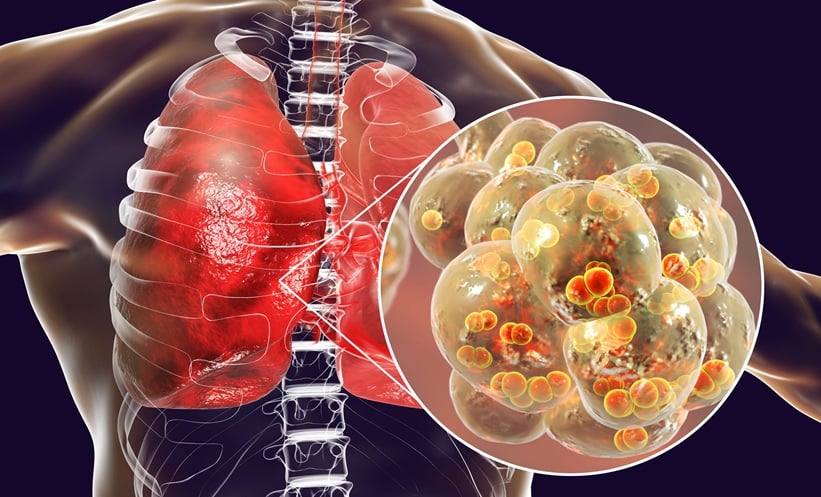Esteban Martinez: Immediate Past President of the European AIDS Clinical Society (EACS); Senior Consultant in Infectious Diseases, Hospital Clínic of Barcelona; Associate Professor of Medicine, University of Barcelona, Spain
Citation: EMJ Microbiol Infect Dis. 2025;6[Suppl 4]:35-36.https://doi.org/10.33590/emjmicrobiolinfectdis/FCLE6622
![]()
The 2025 European AIDS Clinical Society (EACS) Guidelines include major updates spanning antiretroviral therapy (ART) initiation, long-acting therapies, and comorbidity management. Which of these changes do you think will have the greatest clinical impact, and what drove their inclusion?
I think that the most transformative changes are those that bring HIV care closer to the way people actually live. The updated guidance on long-acting therapies is a very good example. We now have clearer, more practical recommendations on injectable treatment and prevention, including how to navigate missed doses, how to handle interactions with gender-affirming hormones or substances associated with chemsex, and how to support people who travel frequently or have unpredictable schedules. These therapies free many people from the burden of daily pills, and that shift is huge.
But I also believe that the emphasis on comorbidities will be equally impactful. People with HIV are ageing, and the guidelines finally reflect that reality in a very comprehensive way. Cardiovascular prevention, metabolic dysfunction-associated steatotic liver disease, sleep, frailty, menopause, cognitive health, obesity, and metabolic issues are now addressed with a depth we didn’t have before. This moves us from a model centred on the virus to a model centred on the person, which in my view is the direction HIV care must go.
The guidelines place stronger emphasis on person-centred care, including patient-reported outcome measures, shared decision-making, and ageing. How do you see these approaches shaping HIV care in Europe as the population grows older?
This evolution feels both natural and necessary. Clinical markers tell us if the virus is controlled, but they don’t tell us if a person is sleeping well, if they are struggling with stigma, if they feel safe in their relationships, or if they have fears about ageing. Patient-reported outcomes help us understand these aspects in a structured way, and shared decision-making gives people agency in their own health.
As more people with HIV reach older age, these conversations become essential. Ageing brings its own challenges: polypharmacy, frailty, cognitive changes, loneliness, and financial stress. When we integrate the person’s voice, we start addressing the whole picture rather than focusing on a single disease. I think that this shift will make HIV care more compassionate, more responsive, and ultimately more effective.
The new sections on long-acting pre-exposure prophylaxis (PrEP) and ART signal a major shift towards sustained-release therapies. What opportunities and challenges do these bring for patients and healthcare systems?
Long-acting therapies offer a level of freedom that many people have been waiting for. For prevention, injectable PrEP is a game changer. It can dramatically reduce the impact of adherence on effectiveness and give people an option that fits easily into their lives. For treatment, long-acting ART empowers individuals who prefer discretion, who struggle with pills, or who simply like the idea of fewer treatment decisions every day.
The challenge is that these therapies require strong organisational support. You need reliable systems for appointments, reminders, follow-up, and transitions. If someone misses an injection or needs to travel, the clinic must be able to adapt quickly. That means rethinking workflows and making sure that healthcare teams are prepared. But if we invest in these systems, the benefits for both individuals and public health can be profound.
With expanded guidance on cardiovascular risk, metabolic complications, metabolic dysfunction-associated steatotic liver disease, and cognitive health, multidisciplinary care is increasingly important. What are the key priorities for collaboration between HIV specialists and other disciplines?
In practice, we need to stop working in silos. HIV clinicians cannot manage every aspect of ageing, and we shouldn’t expect to. Cardiologists, endocrinologists, hepatologists, psychiatrists, geriatricians, and primary care physicians all have essential roles. What the guidelines offer is a common language, a shared framework that helps different specialists collaborate rather than duplicate or contradict each other.
The priorities are simple: clear referral pathways, rapid communication, respect for each other’s expertise, and an understanding that HIV is now a chronic condition intertwined with many others. When care is coordinated, the person in front of us doesn’t experience fragmentation, just good medicine.
New guidance on gender-affirming therapies, chemsex, and diverse prevention contexts reflects a broader inclusivity. How does this illustrate EACS’s commitment to addressing the realities and diversity of people living with HIV today?
To me, it shows a maturity and a genuine openness to the lived realities of people with HIV. The new guidance on gender-affirming hormones is detailed, practical, and respectful. It acknowledges transgender and gender-diverse people not as an afterthought, but as a central part of the HIV community. The same is true for the updated approach to obesity, which moves away from simplistic weight-based definitions and recognises the complex biology behind metabolic health.
The prevention guidance also embraces diversity, from long-acting PrEP to updated sexually transmitted infection management, and more nuanced recommendations for people with hepatitis B. All of this reflects a clear intent: HIV care must be inclusive, modern, and respectful of the broad spectrum of identities, bodies, and experiences.
Having helped shape EACS and its global collaborations, how do you see the next phase of guideline development, particularly in balancing global harmonisation with flexibility for regional needs and new evidence?
I see it moving in two directions at the same time. On one hand, we need strong global coherence. Scientific evidence, especially around treatment and prevention, moves fast and should be communicated consistently across regions. On the other hand, HIV care is delivered in very different systems across Europe. What works in a large, well-resourced clinic may look very different in a smaller setting.
The shift to a continuously updated online format is a major step forward. It allows the guidelines to evolve almost in real time, incorporating new evidence as it appears. But I also think the future will involve more dialogue with communities, more practical tools for implementation, and even greater inclusion of multidisciplinary voices. Ultimately, the goal is simple: to create guidance that is scientifically rigorous, clinically useful, and deeply connected to the needs of the people we serve.








